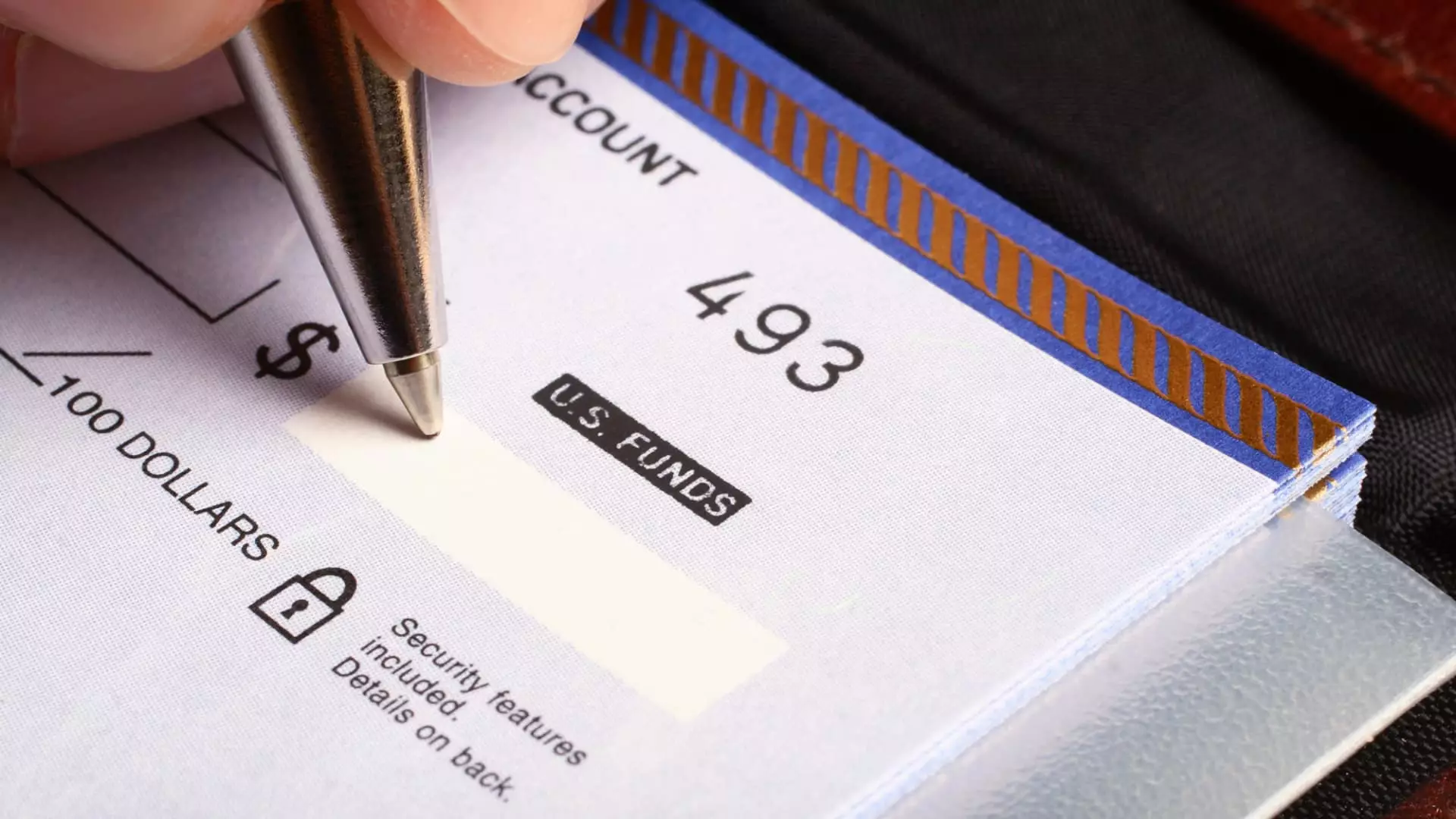In an age where technological advancements are changing the fabric of our daily lives, it’s startling to consider that paper checks—an artifact of a bygone era—still exist as a common payment method. The signing of President Donald Trump’s executive order to eliminate federal paper checks by September 30 marks a pivotal moment that underscores the need for modernization. The U.S. Treasury’s phased withdrawal from checks not only modernizes the government’s payment systems but also reflects a broader cultural shift in financial transactions. The era of checks, once hailed for their convenience, has become fraught with risks such as fraud, theft, and inefficiencies, making their end both critical and timely.
Speed and Security: The Need for Electronic Payment Systems
The rationale behind transitioning to electronic payments is solid. The White House’s assertion that “paper-based payments impose unnecessary costs” cannot be overstated. With antiquated systems lagging behind the technological prowess of current payment methods, checks serve merely as an open invitation for criminal activity. The fact that check fraud and identity theft have escalated in recent years speaks volumes about the vulnerabilities of traditional payment methods. By requiring electronic disbursements, the government can eliminate unnecessary delays and enhance security, ensuring that payments are delivered swiftly and safely.
Consider this: The U.S. Government Accountability Office estimated a staggering potential loss of up to $521 billion annually due to governmental fraud. The numbers reveal not only the perils associated with checks but also the pressing need for a comprehensive and sophisticated approach to payment systems. If we can harness modern technologies—such as direct deposits, digital wallets, and real-time transfers—we will not only secure payments but also reduce the economic drag caused by fraudulent activities.
Changing Habits: The Modern Consumer’s Preference
The COVID-19 pandemic accelerated a transformation in how Americans approach financial transactions. As people adapted to contactless payments, a growing number of consumers reported abandoning the paper check altogether. The GoBankingRates survey noting that nearly half of Americans didn’t write a check in 2023 showcases a clear shift in consumer behavior. Interestingly, the decline in check-writing has been matched by a parallel rise in mobile payment apps like Venmo, Zelle, and Apple Pay.
This paradigm shift is not just an adjustment but an evolution. Today’s young adults view cash and traditional banking with skepticism, gravitating instead toward the immediacy of digital wallets for their financial interactions. It is as if paper checks are not merely obsolete, but an unfathomable concept for a technologically-savvy generation. In short, embracing electronic payments aligns with the preferences of the population and the necessary modernization of banking infrastructure.
The Price of Tradition: Risks for the Vulnerable
While the transition to electronic payments is vital, we must also acknowledge the perhaps unintentional consequences for vulnerable populations. Groups who traditionally rely on paper checks—such as the elderly, Social Security beneficiaries, and those receiving government assistance—stand at a crossroads. The move toward electronic payments raises questions about accessibility, especially for individuals who may not have reliable internet access or who lack the tech-savvy necessary for making the switch.
In this context, policymakers need to balance progress with practicality. We must ensure that the migration to digital payments does not disenfranchise those already skating on the edge of economic insecurity. Inclusion must reign supreme in the conversation of technology adoption. While many applaud the president’s executive order, it’s crucial to consider safeguards and alternative options for those who remain technologically marginalized.
The Financial Divide: Bridging the Gap
The problem of financial inclusion is compounded by the fact that older generations, who are typically more likely to write checks, risk being left behind in this digital shift. They may not know how to set up online bank accounts, let alone maneuver digital wallets. Therefore, enhancing educational programs aimed at teaching these populations about digital payment systems could reduce the risks of exclusion while seamlessly integrating them into the financial mainstream.
Beyond mere adaptation, we need to create a supportive ecosystem for financial education at all levels, empowering consumers to manage and navigate their finances confidently in a digital world. While the transition away from paper checks is heralded as a triumph for modern finance, it should not ignore the very real struggles faced by America’s most vulnerable citizens.
By understanding these multifaceted challenges, we can shape a future where the benefits of technology are extended to everyone—creating a payment landscape that is not only swift and secure but inclusive and equitable as well.

